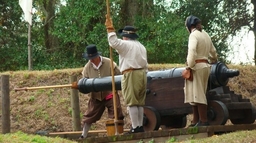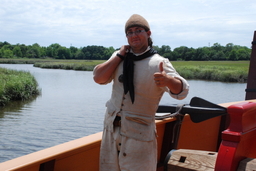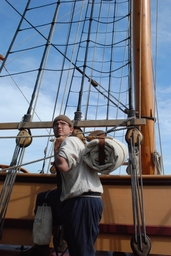So, I have a foc'sle.
and even cooler is that it is inside a reproduction 17th century ship!
What I don't have is documentation either written or drawn about what this wonderful little area on the the vessel is supposed to look like.
About the vessel, she is a 42 ton square rigged topsail ketch circa the 1670s. She's small, around 75' in overall length and 53' on deck. Used for coastal trading work here in the new world, travelling as far out from Charlestowne as Barbados and as far north as Massachusetts. Now back to the foc'sle, architectually she's not all to large, but has two larboard and two starboard berths and a ladder betwixt them that opens to the forward hatch, some room forward and aft of that and thats all she wrote.
Anyway here is a picture of what it looked like completely empty.
http://www.facebook.com/photo.php?pid=3 ... =217401146
I would love to find some documentation about how I could dress out this area on the ketch, but if all you have are "period suggestions" then I'll take those as well.
Thanks in advance
Yr hmbl srvnt
CJ




